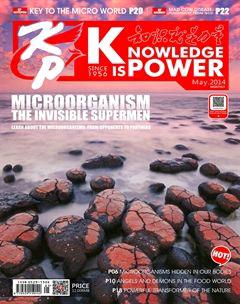The First Man To Make Dialogue With Microorganisms
The mysterious micro world
On one day in 1673, the newly set up Royal Society received a letter named of “ the records by Leeuwenhoek of observing the skin, flesh, bees and other insects by his self-made microscope”. At first, the scholars didnt care about it, for the researcher was not famous at all, and the title of the “thesis” was so long and straight forward. But by reading it, the scholars were all stunned for the things described in the article are astonishing and unheard for them.
A large number of different tiny dilkens……their activities are beautiful, they turn back and forth, move forward and turn to on side……there are millions of these small things in a piece of coarse sand; while in a drop of water—— the dilkens not only grow well in it, but also breed actively——about 2700 thousand of dilkens live in it. Atonie Van Leeuwenhoek born in the home of craftsmen was a draper and administrator of the city hall of Delft in Netherlands. He found the “Dilkens” driven by his curiosity, “Dikens” are the microorganisms people often say later. The amateur researcher without formal education firstly closed the door, and fit the microscope together by his skilled hands, and observed the small things, which was really fun.
The unusual things prompted the Royal Society to arrange people looking for microscope of high quality to verify them. Leeuwenhoeks record was soon translated into English and published on the periodical of the Royal Society. It caused a sensation among the English academic community. Since then, the lonely Leeuwenhoek began to play with his microscope crazily.
Long-term observation
Leeuwenhoek had kept a correspondence with the Royal Society for 50 years, there were 372 letters in all. That was the most unusual event in the history of science. The man doing a “jobwithlittlework” wrote letters to the Royal Society. In the beginning of the letter, he always pulled the gossip, talked about his daily life and business, the leisure anecdotes of the city, sometimes mentioned his lovely dog. After that, he turned to formally describe the new discovery of his microscope, his brushwork was scattered and simple as usual. Fortunately a patient secretary of the Royal Society would arrange them into the conventional format and submit them to the members to read.
Galileo expanded peoples understanding of the sky and the universe with telescope in the early 17th century. In the same way, Leeuwenhoek focused on the common objects with his microscope, and demonstrated another dimensionality of the world people had never thought of. He opened up a brand new research field, and changed our understanding of nature once and for all. He lived up to its reputation as one of the fathers of microbiology.
On August, 27th , 1723, the 91 years old Leeuwenhoek passed away quietly in his native place of Delft. Soon afterward, the Royal Society received two letters written when alive and a large bundle of things from Leeuwenhoek. In one of the letters was the detail creation method of the microscope.
100 years after Leeuwenhoek passed away, people are observing different “Dilkens” again with more efficient microscopes, and understand that they will cause many severe human diseases, while producing many useful matters. As we unlocked one and another mysteries of life, we finally realized the great contributions Leeuwenhoek did for people to understand the world.
Two fantastic worlds
In the end of the 13th century, the glasses correcting vision appeared. Then, Netherlands on the west coast of Europe gradually became the center of glasses manufacturing. Around the year 1590, a glasses manufacturer named Jansen found that when you placed tow pieces of convex lens before and after, and adjusted the distance between them, the tiny things would be magnified if observed through the two pieces of lenses. Hence Jansen fixed two lenses at the two ends of a long hollow tube, and made out the first compound microscope in the world. But people were not aware of its scientific value, and took the microscope just as a toy.
Before the 17th century, the smallest living things people knew were tiny insects. Although almost all the civilization believed in different ways that some supernatural power could make living things invisible, no one thought of the existence of invisible small living things in the nature. The microscope came into the word almost simultaneously with the telescope.

